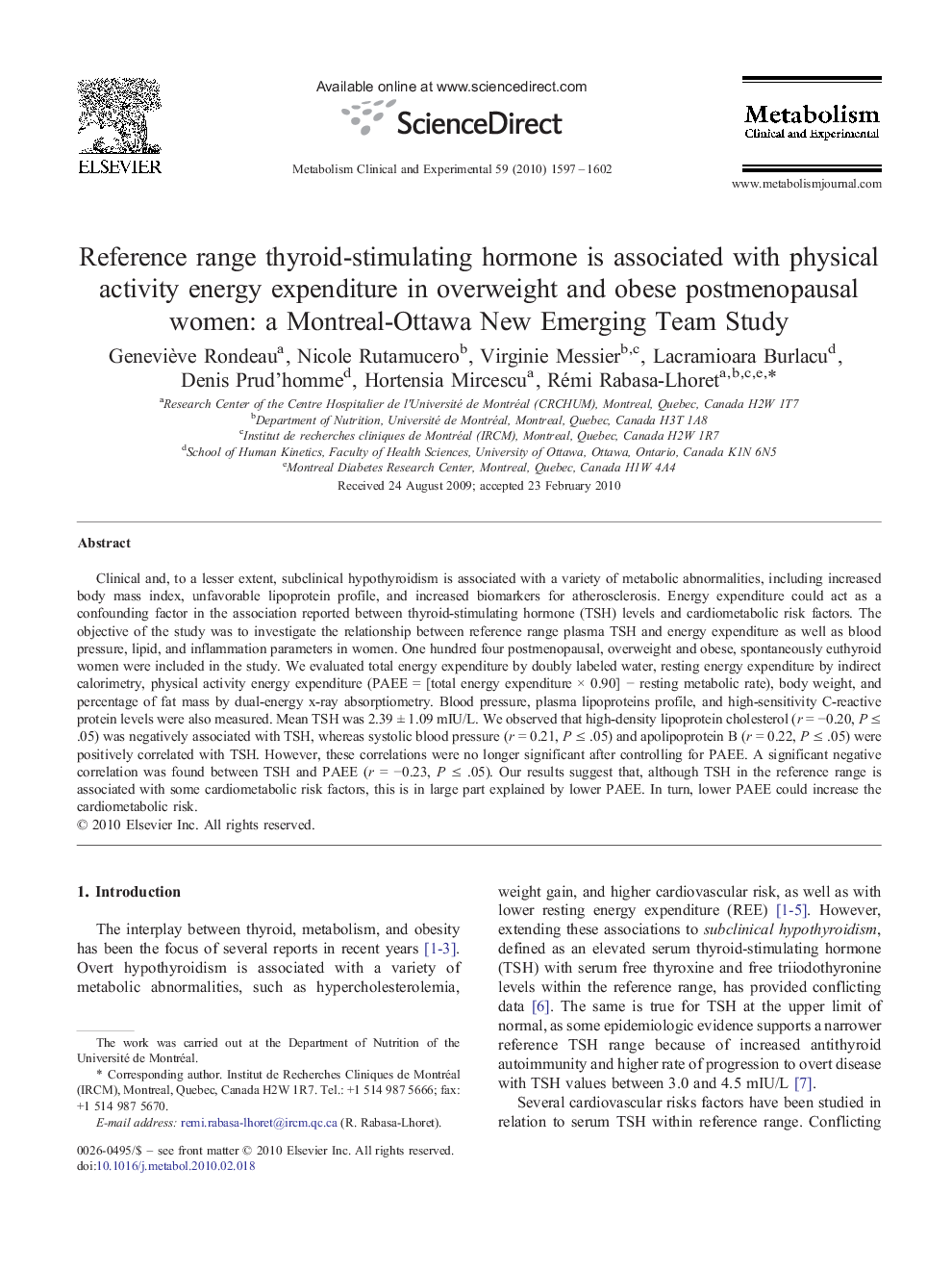| کد مقاله | کد نشریه | سال انتشار | مقاله انگلیسی | نسخه تمام متن |
|---|---|---|---|---|
| 2806718 | 1157131 | 2010 | 6 صفحه PDF | دانلود رایگان |
عنوان انگلیسی مقاله ISI
Reference range thyroid-stimulating hormone is associated with physical activity energy expenditure in overweight and obese postmenopausal women: a Montreal-Ottawa New Emerging Team Study
دانلود مقاله + سفارش ترجمه
دانلود مقاله ISI انگلیسی
رایگان برای ایرانیان
موضوعات مرتبط
علوم زیستی و بیوفناوری
بیوشیمی، ژنتیک و زیست شناسی مولکولی
علوم غدد
پیش نمایش صفحه اول مقاله

چکیده انگلیسی
Clinical and, to a lesser extent, subclinical hypothyroidism is associated with a variety of metabolic abnormalities, including increased body mass index, unfavorable lipoprotein profile, and increased biomarkers for atherosclerosis. Energy expenditure could act as a confounding factor in the association reported between thyroid-stimulating hormone (TSH) levels and cardiometabolic risk factors. The objective of the study was to investigate the relationship between reference range plasma TSH and energy expenditure as well as blood pressure, lipid, and inflammation parameters in women. One hundred four postmenopausal, overweight and obese, spontaneously euthyroid women were included in the study. We evaluated total energy expenditure by doubly labeled water, resting energy expenditure by indirect calorimetry, physical activity energy expenditure (PAEE = [total energy expenditure à 0.90] â resting metabolic rate), body weight, and percentage of fat mass by dual-energy x-ray absorptiometry. Blood pressure, plasma lipoproteins profile, and high-sensitivity C-reactive protein levels were also measured. Mean TSH was 2.39 ± 1.09 mIU/L. We observed that high-density lipoprotein cholesterol (r = â0.20, P ⤠.05) was negatively associated with TSH, whereas systolic blood pressure (r = 0.21, P ⤠.05) and apolipoprotein B (r = 0.22, P ⤠.05) were positively correlated with TSH. However, these correlations were no longer significant after controlling for PAEE. A significant negative correlation was found between TSH and PAEE (r = â0.23, P ⤠.05). Our results suggest that, although TSH in the reference range is associated with some cardiometabolic risk factors, this is in large part explained by lower PAEE. In turn, lower PAEE could increase the cardiometabolic risk.
ناشر
Database: Elsevier - ScienceDirect (ساینس دایرکت)
Journal: Metabolism - Volume 59, Issue 11, November 2010, Pages 1597-1602
Journal: Metabolism - Volume 59, Issue 11, November 2010, Pages 1597-1602
نویسندگان
Geneviève Rondeau, Nicole Rutamucero, Virginie Messier, Lacramioara Burlacu, Denis Prud'homme, Hortensia Mircescu, Rémi Rabasa-Lhoret,